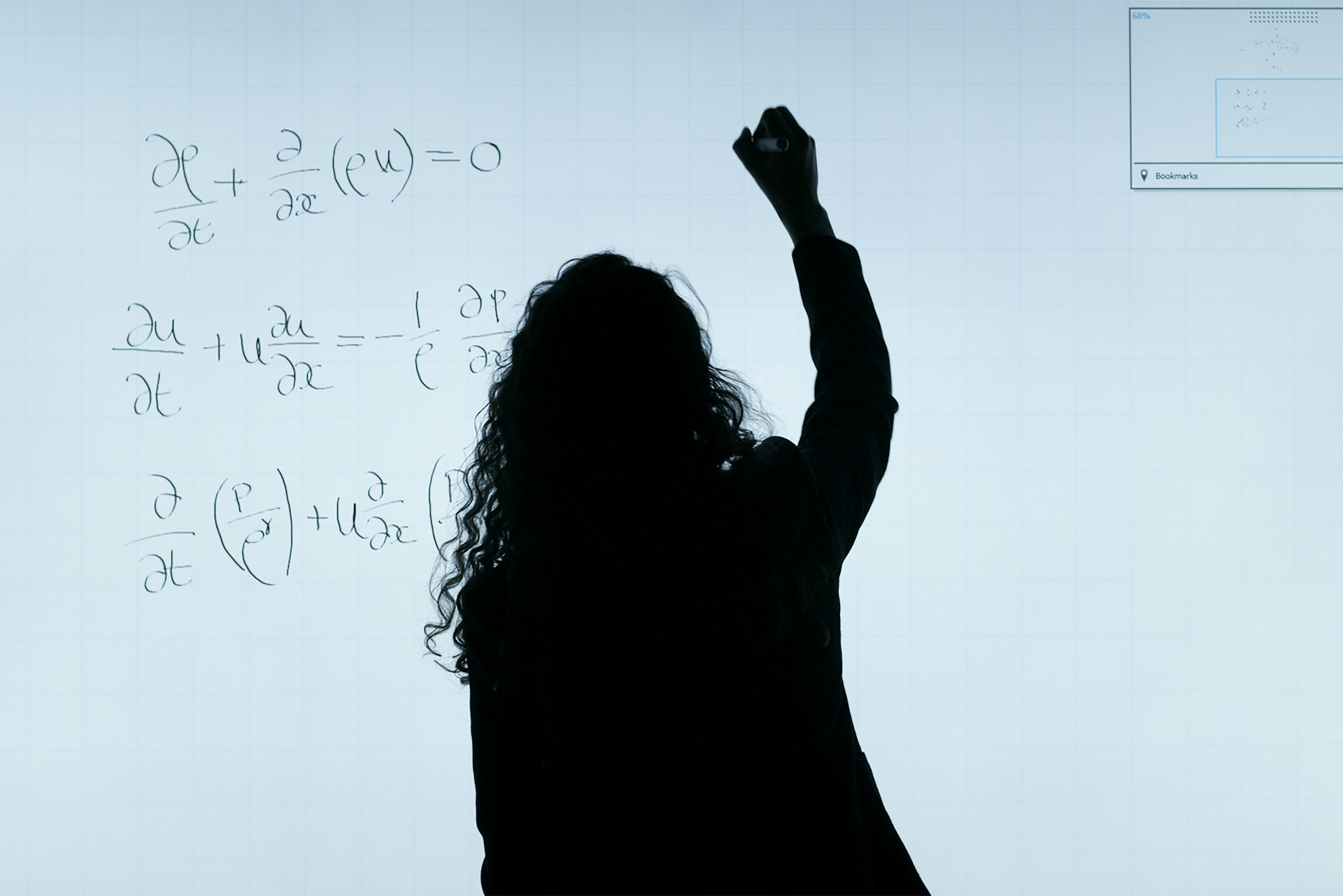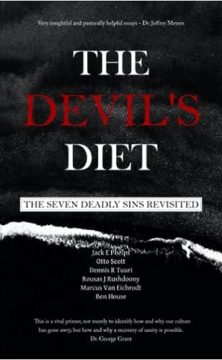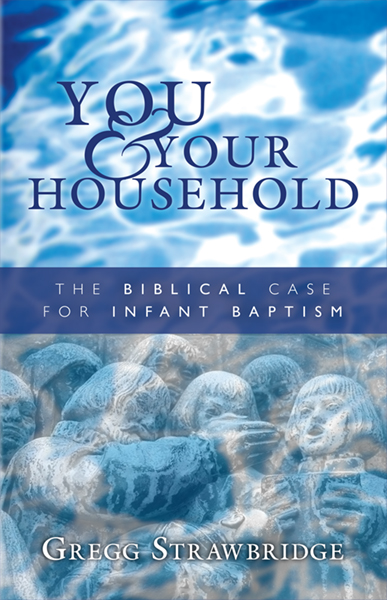The problem is murmured in its various forms within the Christian world. The state university, once a civic institution devoted to the dissemination of knowledge, now labors under the weight of its ideological entanglements—its costs rising in direct proportion to the absence of Christ in its curriculum and culture. Meanwhile, the private Christian colleges, those erstwhile custodians of orthodoxy, perform a grotesque liturgical dance—one foot in the sanctuary, the other in the woke salon. And the few that have not succumbed to such frivolities? They are priced beyond the reach of all but the wealthiest. Where are Christians supposed to send their kids to college?
The landscape of higher education, once a theater for the contest of ideas, has become a game of survival, with institutions shuttering their doors at an alarming rate—according to The Hechinger Report, between 2004 and 2021, 861 institutions ceased operations.[1] Despite the bleak picture of state colleges, many Christians habitually assume that mathematics and science education can be done without Christ (Prov. 14:15). It’s thought that the character of STEM education at State U is little different from Christ-based STEM education. By default, then, many Christians are only too glad to find their way into a government university STEM program.
Proverbs 14:15 says, “The simple believes everything, but the prudent gives thought to his steps,” which means it’s time to re-examine the default pattern. Is it truly wise to bury and conceal Christ when studying the world Christ made?
Anticipating Objections
Some will boldly proclaim that since two and two make four both at State College and at Christian College, there is no need for a distinctly Christian education in the study of science and mathematics. Christians concede that their children need to be shielded from the toxic humanities at Behemoth University. Yet they are convinced that the hallowed halls of STEM classes at the same university are free from the poison of ideology. They naively assume that math and science are neutral as if numbers could somehow escape the hand of the Creator. And so, with this unspoken confidence, they imagine it is safe to send Christ packing from the very classrooms where His wisdom might shine the brightest. Christians have an operational truce with the math and science departments at State U that needs to stop.
Some may argue that math is math. Physics is physics. It’s the same periodic table. So there isn’t a need to receive a Christian-based STEM education. The problem with this argument is it’s a tiny view of God’s world. It fails to understand that math, just as much as the humanities, ought to point to the permanent things. Why is there coherence between mathematical constructions and the workings of the physical world? What is the explanation for the marvelous complexity and order in the universe? A Christian education, whether the subject is Shakespeare or quadratic equations, studies each subject as a door through which students discover not just the divine ordering of the world, but the Divine Being who ordered the world. God’s mandate is that those subjects be taught in such a way that students are “without excuse” to perceive the brilliance of the glory of the Creator (Rom. 1:20). A Christian education fosters this sensibility. A secular one imbues students with one excuse after another.
Three Reasons Mathematics Cannot be Adequately Taught as a Secular Subject
First, the secular classroom mirrors the belief of the ancient Greeks that “man is the measure of all things.” In the Christian classroom, the ultimate intelligibility is not man, nor the impersonal processes of transmutation but the only true and wise God of Scripture. History shows that the catalyst for invigorated scientific study is when Christianity is the broadly shared cultural matrix, that is, when all knowledge is united under God’s Supreme Intelligibility. Since every detail of the universe is purposeful, supervised, and ordered, the search into nature has purpose, supervision, and methods. More simply, when the shared cultural tenet begins with a reasonable God, there is no surprise in finding a correlation between the observer and the thing observed. Thus, the most proper math lesson is the one that reflects on a particular matter of mathematics within the context of an intellectual and cultural tradition that is sustained by a Christian university.[2] Government STEM education, in contrast, is fueled by the expiring fuel of pragmatic necessity.[3]
Second, studying science in a secular program has provided many students with a path to atheism. Why is this? The reason is that without submitting all things to the autonomous God, the Kingdom of math or science becomes the supreme dominion. If nothing can exist outside the dominion of science, if there is nothing that transcends the law of science, and if all that has been, is, and is to come is contained in science, then scientists are insinuating idolatry into their hearts. They are making a creator out of what is derived.[4]
Third, only an education grounded in reality brings immediate liberation from the bonds of atheistic materialism. Many professing Christian engineering students worship God on Sunday but then go to their STEM classes Monday through Friday without a thought about their Maker. Our aspiring Christian engineer is wandering between two worlds, one living, the other dead. In the one world, their religious convictions are explicit. In the other, they are smothered. If Copernicus, Kepler, and Newton were produced by an academic culture steeped in a biblical perspective, what makes us think we will produce the next Isaac Newton from a perspective steeped in atomism?
A metaphysics of contingency, namely, that the creation is dependent upon the Creator, is the indispensable ground for the mature development of science and mathematics. Proper metaphysics produces a humility that is not only good for the soul but fruitful for scientific inquiry. It takes humility to recognize the limitation and purpose of math and science, that it is a servant rather than a master.
Six Reasons Why Christ is Necessary in the Math Classroom
The first reason Christ can’t be suppressed is because of the weight of history.
To call for a Christian STEM college education requires an explanation that casts back to the seventeenth century. The “century of genius” was because of the indispensable role of Protestantism.[5] Charles Dykes explains, “Puritanism created a spiritual climate in England uniquely favorable to the pursuit and development of experimental science, as well as the personal qualities, objectives, and values so essential to progress.”[6] What was the Puritan doctrinal emphasis that became a catalyst for scientific breakthrough? James Nickel highlights four specific doctrines embraced by the Puritans. First, complete trust in the absolute authority of Scripture. Second, faith in the Absolute Personal God as Creator and Lawgiver. Third, an emphasis on vocation and calling. Fourth, an optimistic eschatology. A classroom built on these key distinctions produces the sort of cosmology that is capable of generating scientific genius.[7]
The second reason Christ can’t be suppressed is because of the demands of reality.
The advantage of the Christian math class over the secular one is the same as the advantage of Western Civilization over the non-Christian world. It’s “what French historians call mentalité …. Thinking of reality in quantitative terms with greater consistency than any other members of their species.”[8] The essence of an engineer who builds as a Christian, or a mathematician who calculates as a Chrisitan, or a physicist who quantifies as a Christian, depends upon reliably occupying the biblically defined position of reality. All education pushes people into a grid. Facts require categories and categories require interpretation. A person’s role is framed by these interpretations. Even math is learned in terms of a given structure and the mathematician sees his work in relation to that framework. Math in an atheistic grid, with atheistic categories, and atheistic interpretations, renders a Christless conformism to the rigid rules of suppressed truth (Rom. 1:18).
The third reason Christ can’t be suppressed is because of the force of presuppositions.
Students in a secular math class must struggle against the burden of the faulty presuppositions handed down by Darwin and Dawkins. These students may show interest in investigating nature but because of the sharp line between science and religion, they learn about, say, indeterminate equations, without an interpretation of how this part fits with the whole. Put practically, students cannot pay homage to the rebarbative code inculcated at Behemoth University—”I hate you hateful people, I can’t tolerate your intolerance, I’m absolutely certain there are no absolutes, I know that nothing can be known, I’m sure that nothing is sure”—and be a consistent mathematician. In this way, State University is not actually a university. Like mice scurrying from room to room collecting their meal, students drift from physics class to bowling class to social studies collecting fragmented bits of knowledge with no way to relate the parts to the whole. When a school sells a thousand bits of information—at a cost that makes liars of their accountants—without integration into the Ultimate Reality, what you have is not a university but a multiversity.
The fourth reason Christ can’t be suppressed is because of the meaning of creation.
Mathematicians and scientists study not just the quantitative attributes of the created order but also the qualitative attributes. Quantitative attributes include measures, numbers, order, and uniformity. Qualitative attributes suggest the sacramental nature of creation. Numbers are symbolic of spiritual truths and natural laws teach an inexcusably clear moral lesson (Rom. 1:18-23). Creation is one of God’s means of divine communication. As Herman Bavinck argues, all creation is primarily symbolic, and that symbolism is analogical.[9] God structured the entire cosmos sacramentally and filled it with signs and typological meanings that point to God’s purposes.
God’s creation is a temple with raw materials that point to the sacred order and the Sacred Orderer. Just like the temple reflects divine realities, so does the entire creation (Ps. 19:1-4; Is. 6:1-3. The seven-day structure of creation mirrors the construction of the Tabernacle (Exodus 25-40) and Solomon’s temple (1 Kings 6-7), suggesting that creation itself is a sacred space filled with divine presence.[10] The structure of creation ought to shape humanity into God’s image much like a sacramental liturgy forms God’s people. Water, bread, and wine are sacramental elements in Creation. In Genesis 2:10-14, the rivers flowing from Eden prefigure baptism and living water (John 7:38). Water signifies life, cleansing, and divine presence. In John 6:51 Jesus said, “I am the living bread that came down from heaven.” So bread is not just food but a sign of divine sustenance, reflecting a sacramental order. In Luke 22:20 Jesus said, “This cup that is poured out for you is the new covenant in my blood.” So wine is not just a beverage—it holds covenantal and sacramental meaning.[11]
Augustine argued that whenever you find measure, number, and order in the creation, you are supposed to recognize the Creator behind it. This Creator is none other than the Supreme God, in whom perfect measure, perfect number, and perfect order reside. It is God who has arranged all things with perfect precision and balance.[12] When quantitative attributes are connected to qualitative attributes, they perform the task of making sense not only of the visible world but the invisible one. David Oderberg’s book Real Essentialism provides a metaphysical foundation akin to this view, arguing that the world’s quantitative attributes are not merely human constructs but reflections of the real essences that define things. Since all substances possess intrinsic natures that determine their properties and behaviors, the order we perceive in the world is not arbitrary but rooted in reality itself. As Oderberg states, “To deny real essences is to deny that things have intrinsic natures that determine their behavior, structure, and properties.” The rational structure of creation is not an accident any more than it is an illusion. It is a design feature of the world, one that points beyond itself to the Divine Intellect. The measure, number, and order found in creation are not only signs of God’s presence but are embedded in the very fabric of being itself, revealing a universe suffused with divine intentionality.[13]
The fifth reason Christ can’t be suppressed is because of the necessity of theology.
Natural science ostensibly studies the visible world. Theology ostensibly studies the invisible world. Yet they speak of the same thing from different perspectives. Christians know that an event can be both the work of Providence and have a natural cause. Natural science explains the event from its sphere of analysis. Theology explains the event from its sphere of analysis. There exists no contradiction between the two. The integrated truth is that God’s world operates with contingency, which is not that one thing depends upon another but that something depends upon Someone. As Hebrews 1:3 says, Christ “upholds the universe by the word of his power.” The entire reason empirical investigations are warranted is that it is a pointer to the Ultimate Intelligence, the Absolute Person, the Alpha and Omega.
The sixth reason Christ can’t be suppressed is because of the reality of numbers.
Christians believe in the reality of numbers. In the world God made, numbers necessarily exist as part of the rational order established by God, not merely as human constructs but as reflections of divine wisdom.[14] They are neither conceptual nor linguistic constructs. They are part of the fundamental structure of reality, which is a testimony to the Ultimate Reality, God himself. Yet, the number two does not exist in a physical form. The number two, immaterial as it is, cannot be picked up or put in a box or stored in a refrigerator. In this way, it is an intangible structure that describes real-world relations, for how else could humans recognize “one thing” that exists, or “many things,” if the number one didn’t exist? How could Christians say that there are two sacraments—baptism and the Lord’s Supper—if the number two didn’t exist as an objective reality? The existence of numbers is an unavoidable consequence of the existence of anything at all.[15]
The fact that these numbers go on for infinity is an unsolvable problem within the limits of a finite system. The foundation for truth in mathematics is not found within the system of mathematics or within the mind of man. The ultimate foundation of math comes from a Who, not a what, which is why math has an ultimate meaning beyond just mere calculation. The mathematical concept of the infinite points in the direction of the Infinite Personal God of the Bible. Math is not a cold and indifferent machine grinding out answers, but a language woven into the fabric of reality—a poetry written in numbers, a hymn sung in ratios. Numbers stretch endlessly into the infinite because they are echoes of the Infinite Mind, whispering through every equation that two and two do not merely make four, but that all things are reconciled in Him who first counted the stars (Col. 1:15-20).[16]
If it’s true that “by faith we understand” that the universe is God’s creation (Heb. 11:3) then studying the hard sciences without faith in Christ means the student doesn’t understand the world. They may be proficient at lesson 13—vector functions—in Gilbert Strang’s Linear Algebra and Its Applications. But understanding requires plugging lesson 13 into a corporate mental frame of reference that is consciously derived from God’s ordering of all things in measure, number, and weight. The only legitimate point of integration of all the math lessons; all the physics lessons, and all the literature lessons, is Jesus Christ, who holds all things together (Col. 1:17f). Through Jesus’ death and resurrection, all lines come together and all courses of study are reconciled in unity to Christ (Col. 1:18-20).
Conclusion
Oswald Spengler said, “The style of any mathematics which comes into being … depends wholly on the culture in which it is rooted, the sort of mankind it is that ponders it.”[17] Francis Shaeffer said, “The world view determines the direction such creative stirrings will take, and how—and whether the strings will continue to dry up.”[18] Just as a tree cannot sever its roots and expect to bear fruit, neither can mathematics and science be unmoored from their Source and expect to prosper. And this is why Christians must again commit to the value of Christian education, not just in the humanities, but in mathematics and science.
The assumption that “Christian U is the answer” is naive. Most of the current “Christian” colleges may be more problematic because, for example, of how they weave evolutionary theory into their science classes in the style of Biologos curriculum. Of the few faithful Christian colleges, most emphasize excellence in the liberal arts rather than the sciences. So when some ambitious person pitches you an idea of a thoroughly Christian STEM college, your charge, dear Christian, is to support them. Contribute money, and resources, and don’t be afraid to enroll your children in a small college that isn’t following the government’s mold. It might look a little different, but this is how we disrupt the relative stability of the failing educational experiment.
Jason Cherry is an elder at Trinity Reformed Church in Huntsville, Alabama, as well as a teacher and lecturer of literature and history at Providence Classical School in Huntsville. Jason is the author of the book The Making of Evangelical Spirituality and is one of the founders of Trinity Polytechnic Institute, where he helps shape its vision. To contribute to the college, email admin@tpi.college.
[1] Barshay, Jill. “PROOF POINTS: 861 Colleges and 9,499 Campuses Have Closed Down Since 2004.” The Hechinger Report, November 21, 2022. https://hechingerreport.org/proof-points-861-colleges-and-9499-campuses-have-closed-down-since-2004/.
[2] Francis Scheaffer, How Should we Then Live? The Rise and Decline of Western Thought and Culture (Revell, 1976), 134.
[3] U.S. Congress. National Defense Education Act of 1958. Public Law 85-864. 85th Cong., 2nd sess. September 2, 1958. https://www.govinfo.gov/content/pkg/STATUTE-72/pdf/STATUTE-72-Pg1580.pdf.
[4] James Nickel, Mathematics: Is God Silent? (Ross House Books, [1990, 2001] 2012), 174-175.
[5] Richard F. Jones, Ancients and Moderns: A Study of the Rise of the Scientific Movement in Seventeenth Century England (New York: Dover Publications [1936, 1961] 1982), 87-182.
[6] Charles Dykes, “Medieval Speculation, Puritanism, and Modern Science.” The Journal of Christian Reconstruction: Symposium on Puritanism and Progress (6:1), ed. Gary North. Vallecito, CA: Chalcedon, 1979.
[7]James Nickel, Mathematics: Is God Silent? (Ross House Books, [1990, 2001] 2012), 136-138, 143-145.
[8] Alfred Crosby, The Measure of Reality: Quantification and Western Society, 1250-1600 (Cambridge University Press, 1997), x-xi.
[9] Herman Bavinck, The Doctrine of God, William Hendriksen, trans. (Edinburgh: The Banner of Truth Trust, [1951] 1977), 86-94.
[10] Jordan, James B. Creation in Six Days: A Defense of the Traditional Reading of Genesis One. Moscow, ID: Canon Press, 1999.
[11] James B. Jordan, The Liturgy Trap: The Bible vs. Mere Tradition in Worship. Niceville, FL: Biblical Horizons, 1994 & James B. Jordan, Through New Eyes: Developing a Biblical View of the World. Brentwood, TN: Wolgemuth & Hyatt, 1988, pages 47-66.
[12] Saint Augustine. The City of God. Translated by Marcus Dods, vol. 2, 21st ed. New York: Random House, 1950, 11.4.
[13] David S. Oderberg, Real Essentialism (New York: Routledge, 2007), 113-147.
[14] Augustine. On Free Choice of the Will. Translated by Thomas Williams (Indianapolis: Hackett Publishing, 1993), 38.
[15] Edward J. Lowe, The Possibility of Metaphysics (Oxford: Clarendon Press, 1998), 223
[16] James Nickel, Mathematics: Is God Silent? (Ross House Books, [1990, 2001] 2012), 193-194.
[17] Oswald Spengler, “The Meaning of Numbers.” The World of Mathematics, ed. James R. Newman (New York: Simon & Schuster, 1956), 4:2318.
[18] Francis Shaeffer, How Should we then Live? The Rise and Decline of Western Thought and Culture (Old Tappan: Revell, 1976), 133.
















